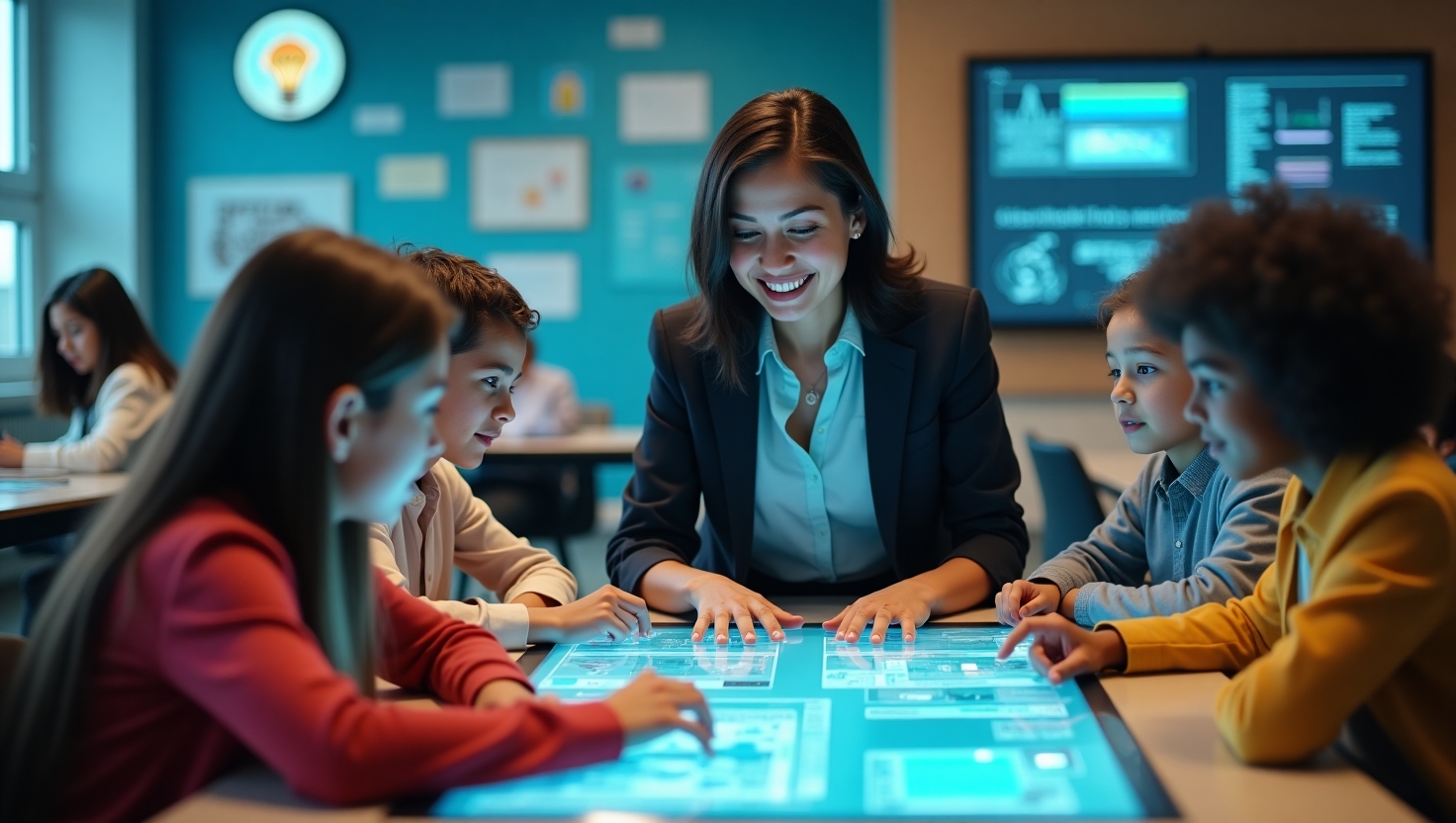The Role of AI in Education: Enhancing Creativity Through Technology
Introduction
The digital revolution is transforming how we learn, and at the heart of this transformation lies Artificial Intelligence (AI). AI in education is more than just a technological advancement; it’s a profound shift in how we think about teaching, learning, and the role of technology in creativity enhancement. As we surge toward a new frontier of educational technology, AI teaching tools are at the forefront, reshaping the pedagogical landscape. This blog aims to explore these shifts, emphasizing the significance of AI in fostering creativity and innovation in educational settings.
Background
AI in education, though relatively recent, has rapidly evolved, intertwining deeply with educational technology and reshaping traditional teaching methods. AI’s journey in education can be likened to the leap humanity took in moving from typewriters to modern computers. Just as computers revolutionized personal and professional spaces, AI teaching tools are beginning to redefine traditional classrooms.
Educational technology today is not only about online classrooms or digital textbooks; it involves tailored AI solutions that provide personalized learning experiences. AI teaching tools can adapt to individual learning styles, offering customized feedback and resources. This flexibility enhances the learning process, making it more engaging and effective.
Traditional teaching often focused on rote learning and standardized testing, but the incorporation of AI encourages a more dynamic approach. The technology facilitates the integration of critical thinking and creativity, fostering a more holistic educational experience. By allowing students to interact with complex concepts through practical applications, AI empowers them to think outside the box, an ability crucial in today’s rapidly changing world.
Trends
Current trends reveal an exciting narrative about AI teaching tools and their creative applications within educational settings. AI is not only personalizing learning but also serving as a catalyst for creativity enhancement. For instance, platforms utilizing AI can generate interactive art projects or simulate complex scientific experiments, thus bringing creativity into subjects traditionally viewed as rigid.
An inspiring example is AI-powered platforms used in art classes, which suggest innovative approaches students might not have considered alone. Such tools are implemented successfully in classrooms, assisting teachers in designing curricula that encourage students to explore uncharted creative territories.
Moreover, the integration of creativity enhancement features in AI learning tools shows great promise. AI teaching tools are increasingly incorporating gamification, interactive simulations, and virtual reality experiences, making learning both engaging and creative. This integration lays the foundation for a new era where educational technology not only imparts knowledge but sparks the creativity needed to solve real-world problems.
Insight
The insights garnered from similar initiatives elsewhere in the tech world, as highlighted in related articles, underscore the crucial integration of AI tools in education. Just as AI-assisted coding tools like Copilot have become an essential part of developers’ workflows, educational AI can become indispensable in teaching critical thinking alongside creativity (source: From Habits to Tools).
It’s imperative for educators to not just rely on AI but to weave it into teaching practices that stimulate creativity. An educator, armed with tailored AI applications, can create an environment where students are inspired to innovate and adopt a problem-solving mindset. This approach mirrors the concept of ‘magic words’ in AI applications, which enable complex processes through simple commands, thereby enhancing engagement and functionality (source: Magic Words: Programming the Next Generation of AI Applications).
Forecast
Looking to the future, the potential of AI in education appears boundless. The anticipated advancements in educational technology point towards a more interconnected and creative learning ecosystem. As AI continues to evolve, it is expected to offer even more sophisticated tools that nurture creativity, from virtual reality spaces for hands-on learning to AI tutors providing personalized feedback and coaching.
The growing necessity for AI literacy in education indicates an impending shift where understanding AI becomes crucial for both instructors and students. This literacy will not only aid in navigating AI-driven educational tools but will also embed a deep understanding of technology and its capabilities.
Call to Action
The journey of AI in education is just beginning, and its success hinges on our willingness to embrace these changes. Educators, students, and policymakers alike are encouraged to explore AI teaching tools and consider their applications for enhancing creative approaches in learning. Share your experiences and insights on AI integration in your educational environments, and join the conversation on how technology can transform creativity and learning.
As we continue to unlock the potential of AI in education, let us work together to ensure that technology enhances, rather than replaces, the creativity that defines human learning. Through collaboration and innovation, we can harness AI to build a brighter, more creative educational future.
